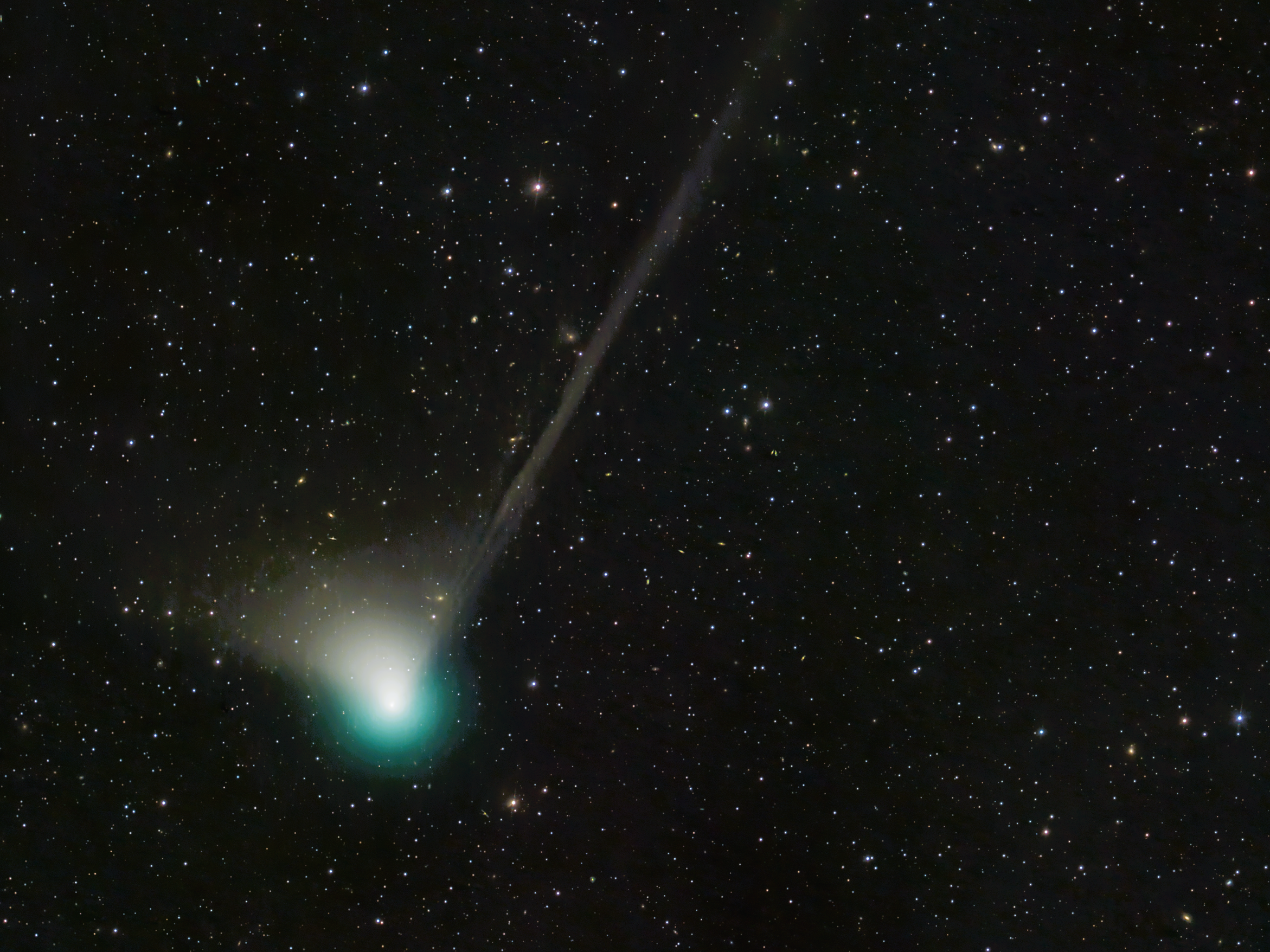The 2023 ‘green comet’ is now visible from Earth for the first time in 50,000 years
Recently discovered comet C/2022 E3 is so rare that it was last seen during the Ice Age
Your support helps us to tell the story
From reproductive rights to climate change to Big Tech, The Independent is on the ground when the story is developing. Whether it's investigating the financials of Elon Musk's pro-Trump PAC or producing our latest documentary, 'The A Word', which shines a light on the American women fighting for reproductive rights, we know how important it is to parse out the facts from the messaging.
At such a critical moment in US history, we need reporters on the ground. Your donation allows us to keep sending journalists to speak to both sides of the story.
The Independent is trusted by Americans across the entire political spectrum. And unlike many other quality news outlets, we choose not to lock Americans out of our reporting and analysis with paywalls. We believe quality journalism should be available to everyone, paid for by those who can afford it.
Your support makes all the difference.The first comet to light up the night sky since the Neowise comet in 2020 is approaching Earth.
The E3 comet – also known as C/2022 E3 (ZTF) – is not just a once-in-a-lifetime event, it is a once-in-an-epoch spectacle that was last seen when Neanderthals still roamed the Earth 50,000 years ago.
The green comet will pass within 26 million miles of Earth on 1 February; however, it is already visible to people in the Northern Hemisphere with binoculars or telescopes under the right viewing conditions.
Astronomers have been tracking the E3 comet since March last year, when it was first discovered. It features a blue-green coma and a golden tail.
First discovered by the Zwicky Transient Facility (ZTF) in California, the E3 comet has since been photographed by astronomers at Nasa.
“This comet isn’t expected to be quite the spectacle that Comet Neowise was back in 2020, but it’s still an awesome opportunity to make a personal connection with an icy visitor from the distant outer Solar System”, said the space agency in a statement.

The E3 comet got its name for being the third comet discovered in the fifth fortnight of the year.
Astronomers advise anyone hoping to see the E3 comet to pick a dark place free of ambient light and allow 30 minutes for eyes to adjust.
Specialist smartphone apps and websites can also be used to determine the comet’s position in the sky, such as Star Chart, Sky Safari and SkyView.
“Comets are intrinsically highly unpredictable objects, since their brightness depends on the scattering of sunlight from dust particles in the comet’s coma and tail,” comet-tracking website In-The-Sky noted.
“This dust is continually streaming away from the comet’s nucleus, and its density at any particular time is governed by the rate of sublimation of the ice in the comet’s nucleus, as it is heated by the sun’s rays. It also depends on the amount of dust that is mixed in with that ice. This is very difficult to predict in advance, and can be highly variable even between successive apparitions of the same comet.”
The best time to see the green comet E3 is in the early morning, just before dawn.
At its perigee at the start of February, it should be possible to see with the naked eye.


Join our commenting forum
Join thought-provoking conversations, follow other Independent readers and see their replies
Comments